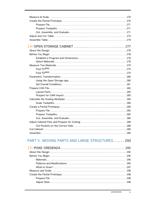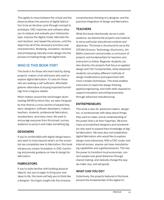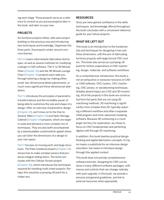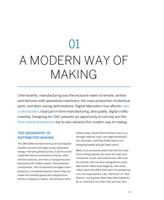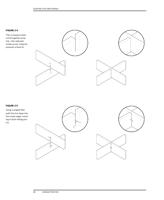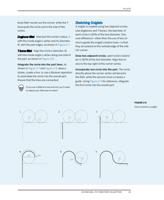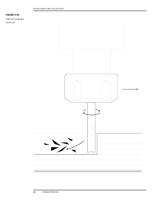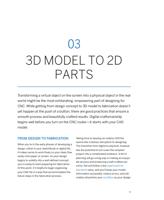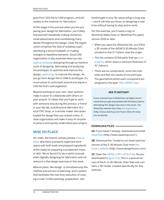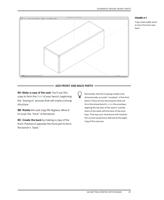
WHY DO CNC PROJECTS LOOK THE WAY THEY DO?
FIGURE 1-1
Example of a
distributed manufac-
turing ecosystem
they are quickly discarded after their shortly
useful lives are over.
For many makers, DIY is the obvious, self-
sufficient alternative to this big box dilemma.
Basic design and CNC knowledge will empower
you to make functional, delightful DIY projects
for everyday use. Designing for CNC, however,
can also make a positive impact far beyond
your own project and self-sufficiency. You can
share your digitally fabricated designs with a
network of remote makers and fabricators, and
in the process, support a new manufacturing
paradigm (Figure 1-1). When we choose to ship
information, not stuff, we are collectively
advancing a manufacturing method that has
positive consequences for the environment,
local communities, and for democratic econo-
mies.
WHY DO CNC PROJECTS LOOK
THE WAY THEY DO?
“Total design is nothing more or less than a process
of relating everything to everything.”
—George Nelson
This often-cited quote by mid-century architect
and designer George Nelson is a fitting explan-
ation of why many CNC designs share a unique
“look.” Good design will inevitably transcend
style and aesthetics, when designers relate
everything to everything. For centuries, furni-
ture design has been optimized around tools,
material, technique, function, and aesthetics.
Hardwood furniture was built with integral
structural joinery, which was often expressed to
celebrate the quality, integrity, and craftsman-
ship of the object. This can be seen in the dove-
30
DESIGN FOR CNC













